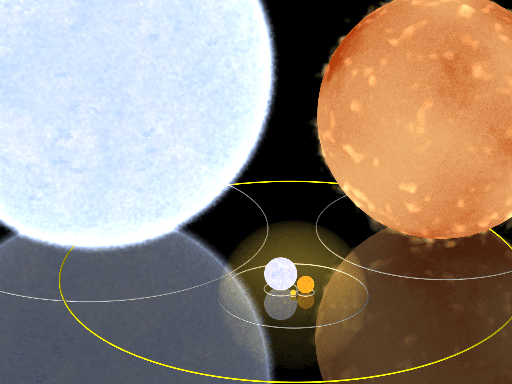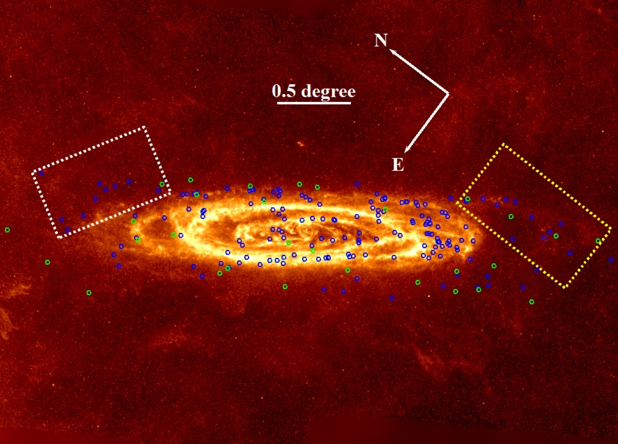Hundreds of supergiant stars have been discovered in nearby galaxies.
Supergiants are the most short-lived stars: they "burn" all their thermonuclear fuel within a mere tens of millions of years, which is akin to the lifespan of a mayfly in cosmic terms. Thus, they are relatively rare. All previous generations of such stars quickly "burned out" and exploded as supernovae, meaning they abruptly shed their outer layers and left behind "bare" cores, compressed to a tiny diameter of just a few tens of kilometers — neutron stars or black holes of stellar mass.
Therefore, these cosmic "titans" can only be found where "life continues," where new stars are born, and where there are dense accumulations of matter from which these stars can gradually form. Supergiants are particularly frequently found in scattered star clusters — "families" of roughly similar stars of the same relatively young age. They have recently formed from a dense cloud and are now gradually drifting apart, "scattering" as they orbit around the galactic center.
For obvious reasons, most supergiants are observed in our galaxy, the Milky Way, while finding them beyond its borders is significantly more challenging: they are not only far away but may also reside in a rather dense interstellar medium, where such stars are not always easily identified as supergiants.

Recently, a team of astronomers from China surveyed two neighboring large galaxies — Andromeda (M31) and the Triangulum Galaxy (M33). To remind, Andromeda is located 2.5 million light-years away from us, making it the closest of the large galaxies, while the Triangulum Galaxy is slightly farther. The researchers observed them using the Large Sky Area Telescope (LAMOST). This telescope is a special type — a spectrograph. It not only captures light but also "dissects" it into a spectrum, allowing for significant insights into the chemical composition of the source.
As a result, as the scientists reported in their article (posted on the preprint server arXiv.org), they identified 199 supergiants in Andromeda and 84 in Triangulum. Among them, the most massive star is located in M31 (it is "heavier" than 40 Suns). In M33, the largest star has a mass equivalent to 32 Suns.

It should be noted that supergiants do not always possess "supergiant" mass: sometimes their mass is only 10-15 times that of the Sun, but the star has expanded to enormous sizes. This is how a red supergiant comes to be. It is undoubtedly a "dying" star: it is on the verge of exploding. The most probably well-known example is Betelgeuse, whose "pre-death" pulsations astronomers eagerly observe. Its mass is no more than 19 Suns, yet its radius is approximately 700 times that of the Sun. If Betelgeuse were situated in the place of the Sun, we would be inside it along with Mercury, Venus, and Mars.
However, there are supergiants of other "colors" as well. Blue supergiants are the heaviest and brightest. For instance, in the Large Magellanic Cloud, the record-holder R136a1 has a mass ranging from 265 to 315 Suns. Nevertheless, even such stars are primarily considered to have grown larger with age, meaning they are "aging," and their cores have almost exhausted their function as thermonuclear reactors.
In general, there is a noticeable trend that supergiants may start off blue or white as they "age," then gradually fade, becoming yellow, and finally reach the red stage. However, this is not a strict rule. For example, some scenarios suggest that a red supergiant can contract and turn into a blue one. Moreover, sometimes a blue supergiant explodes as a supernova, skipping subsequent stages. Therefore, scientists have a tremendous interest in such stars: their diversity helps to understand the "lives" of stars and even entire galaxies.
Interestingly, among those discovered by the Chinese team, the overwhelming majority are yellow supergiants: there were 187 of them. Blue supergiants came in second place (90). Only six red supergiants were found, but astronomers emphasized that this does not indicate their rarity; the telescope is simply much better at distinguishing the brighter stars.